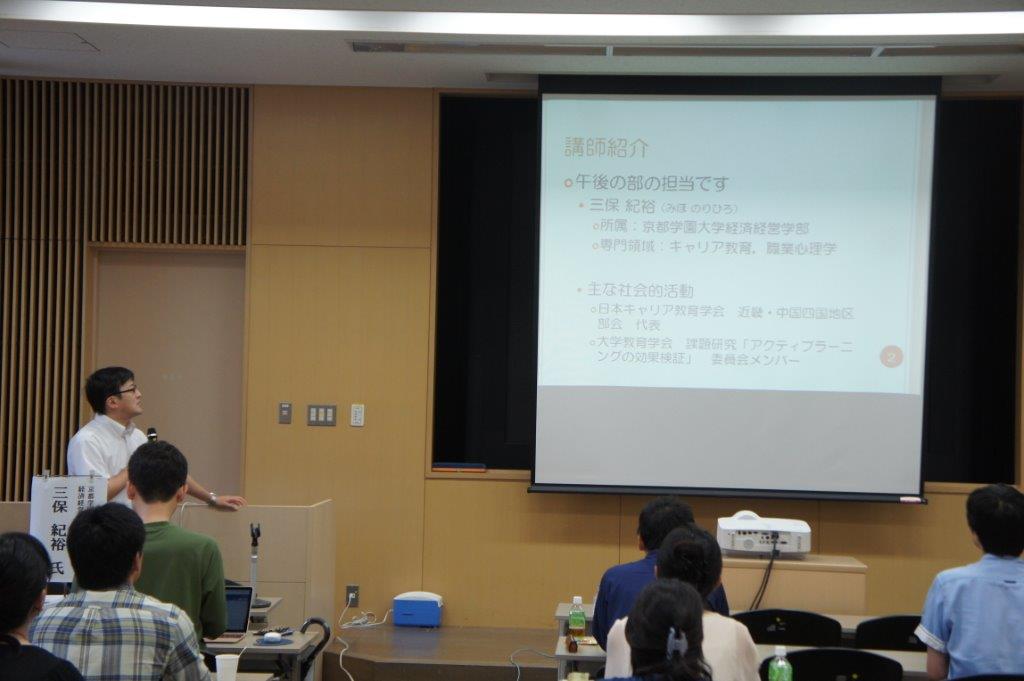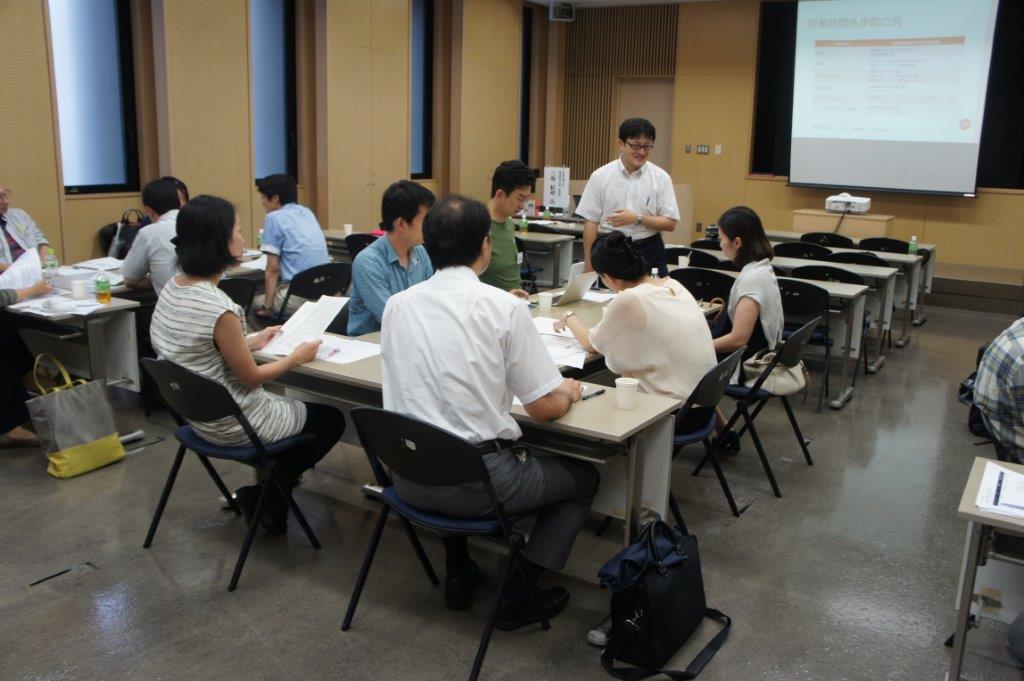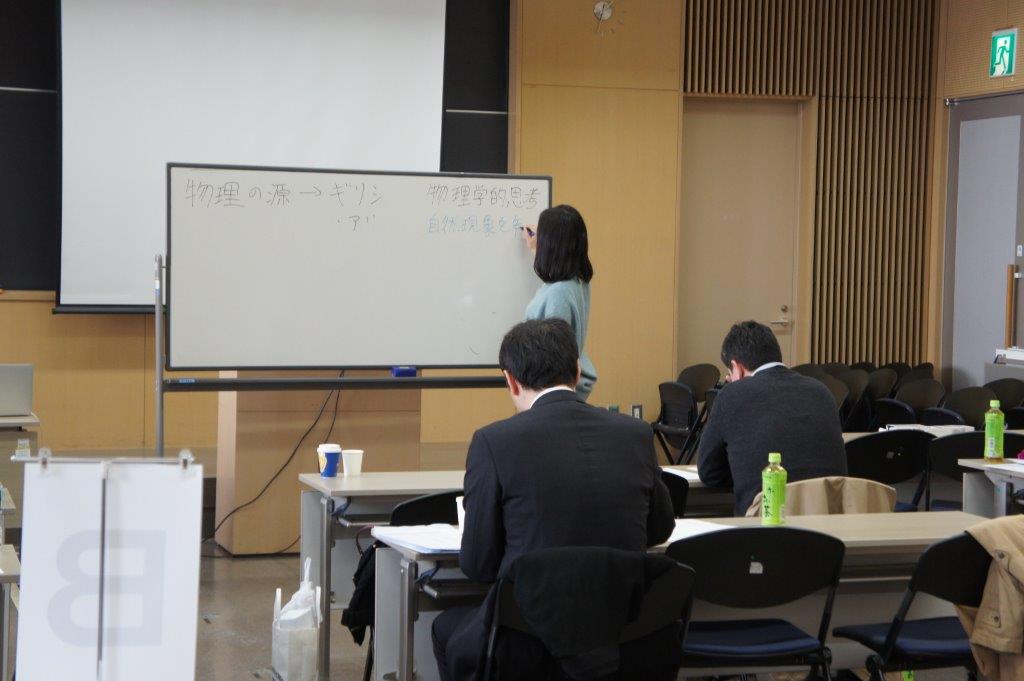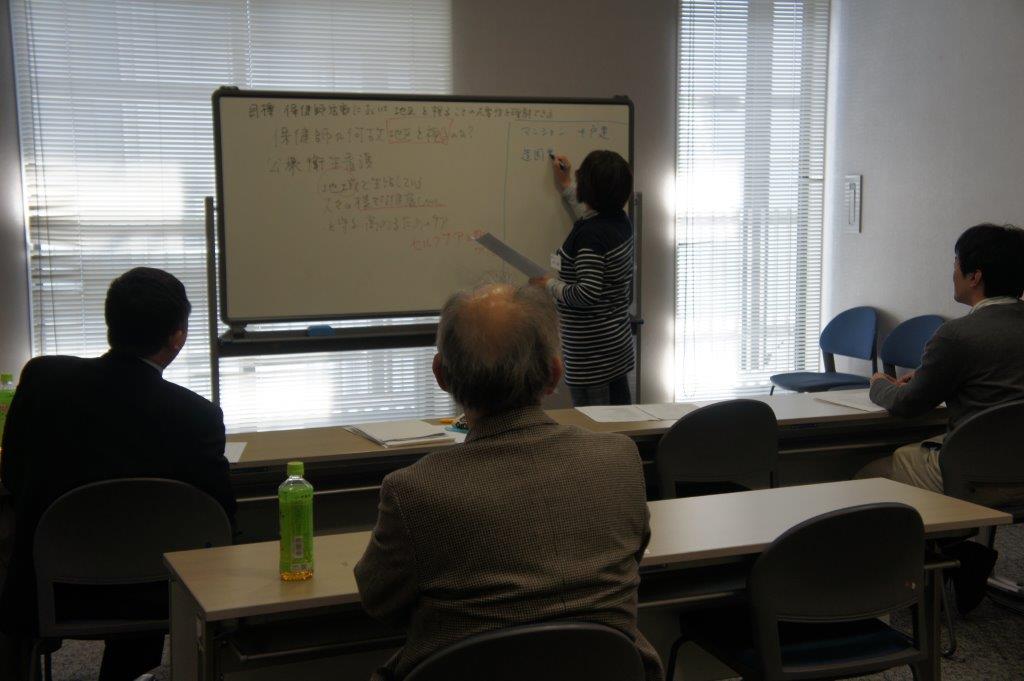Business Overview
As an organizational effort for faculty members to improve and enhance their teaching content and methods, the University Consortium Kyoto has been promoting FD activities in the Kyoto area together with member universities since 1995, shortly after its establishment.
The FD Joint Training Program for New Teachers is a training program that complies with the “Standard Framework for New Teachers” proposed by the National Institute for Educational Policy Research with the aim of equipping students with the knowledge and skills necessary for university teachers.
In 2015, we expanded the scope of participation to include part-time faculty members at member schools.
In addition, although the program name is “newly appointed faculty member,” there is no limit on the number of years of service because it is a program that is useful for teachers at all career stages.
It is also possible to participate in only one of the two days.
Outline of the event
FY2016 FD Joint Training Program for New Teachers
Program A
- Date
- Saturday, September 17, 2016, 13:00-18:00
Sunday, September 18, 2016, 10:00 a.m. – 4:30 p.m.
Program B
- Date
- Saturday, March 11, 2017 13:00-17:00
Sunday, March 12, 2017 9:30 a.m. – 5:00 p.m.
- Venue
- Campus Plaza Kyoto【Access】
- Target
- Faculty members of the University Consortium Kyoto and junior colleges
* Full-time or part-time, and the number of years of work does not matter - Organizer
- University Consortium Kyoto
- Contents
- New Teacher FD Joint Training Program A Flyer [Click here for details]
New Teacher FD Joint Training Program B Flyer [Click here for details]
| Time | Content |
| Day 1 13:00~18:00 |
1. Career Development for FD and University Teachers Lecturer: Kenji Otono (Professor, Kyoto Sangyo University) |
| 2. Basic knowledge and workshops for learning support and special needs Lecturer: Jun Murata (Assistant Professor, Support Room for Students with Disabilities, Kyoto University) |
|
| Day 2 10:00~16:30 |
3. Basic knowledge and workshops for lesson design Lecturer: Takashi Yasuoka (Professor, Ritsumeikan University) |
| 4. Basic knowledge and workshops for learner-centered class management Lecturer: Norihiro Miho (Associate Professor, Kyoto Gakuen University) |
| Time | Content |
| Day 1 13:00~17:00 |
1. Kyoto’s university city Kyoto Lecturer: Hiroshi Kurita (Deputy Secretary-General, University Consortium Kyoto) |
| 2. Workshops for grading Mr. Katsuhiro Enzuki (Professor, Faculty of Letters, Doshisha University) |
|
| Day 2 9:30~17:00 |
3. Workshops for lesson design 4. Classroom Practical Workshop Lecturer: Kazuharu Abe (Professor, Faculty of Career Development, Kyoto Koka Women’s University) |
Implementation Report
Hosted by the University Consortium Kyoto: Joint Training Program ≪ for New Faculty FDs≫
■New Teacher FD Joint Training ≪Program A≫ Implementation Report
On Saturday, September 17 and Sunday, September 18, the University Consortium Kyoto held the “2016 Joint Training Program ≪Program A≫ for New Faculty FDs.”
The purpose of this training program is to support educational activities by providing training to new teachers in cooperation with member universities, and at the same time, to provide a place for exchange that transcends the boundaries of universities, the program is planned and operated annually by the FD Planning and Research Committee of the National Institute for Educational Policy Research. Participants who attended both Program A in September and Program B in March will receive a certificate of completion.
This year, 18 participants from 7 universities were welcomed.
■Training Day 1
The first day of the training started with “Career Development for FD and University Teachers” and was given by Mr. Kenji Otono of Kyoto Sangyo University, Micro Team Leader of the FD Planning and Research Committee. What is FD? From this perspective, he explained recent trends in higher education, including the report of the Central Education Council, and finally introduced the issues of motivation, autonomy, and revitalization of classes in classes, as well as various teaching techniques.
In the group discussion that followed, the participants were divided into five groups and discussed on the themes of “Dealing with Diverse Students,” “How to Manage Classes,” “Motivating Students,” “Teaching Classes Outside of Specialized Areas,” and “Active Learning.”
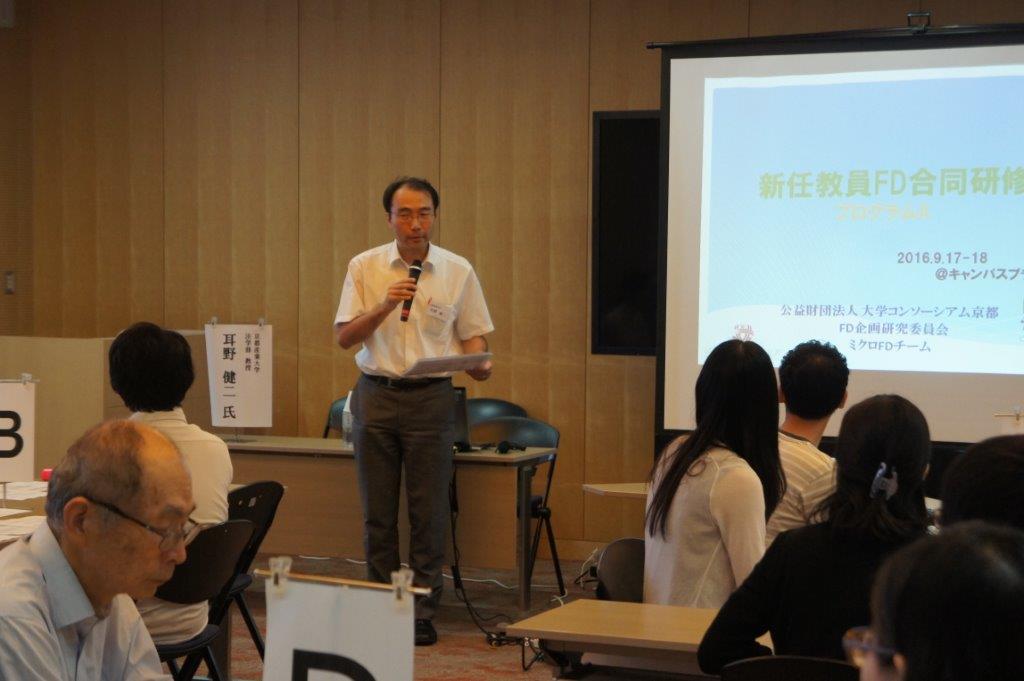
After a break, the final lecture was given by Mr. Jun Murata of the Support Room for Students with Disabilities, Kyoto University, entitled “Basic Knowledge of Lesson Design and Workshop.”
The seminar focused on the current state of support for students with disabilities at universities, understanding and supporting students with developmental disabilities, and communication. In the workshop, participants were divided into pairs, and one person was given a piece of paper on which to draw a shape, and the other person had to convey the shape only with words, and the other person would draw a figure with only the words he heard. When drawing shapes, we taught them how to understand the composition and other guidelines firsthand, so that they could feel the importance of communication in an easy-to-understand manner.
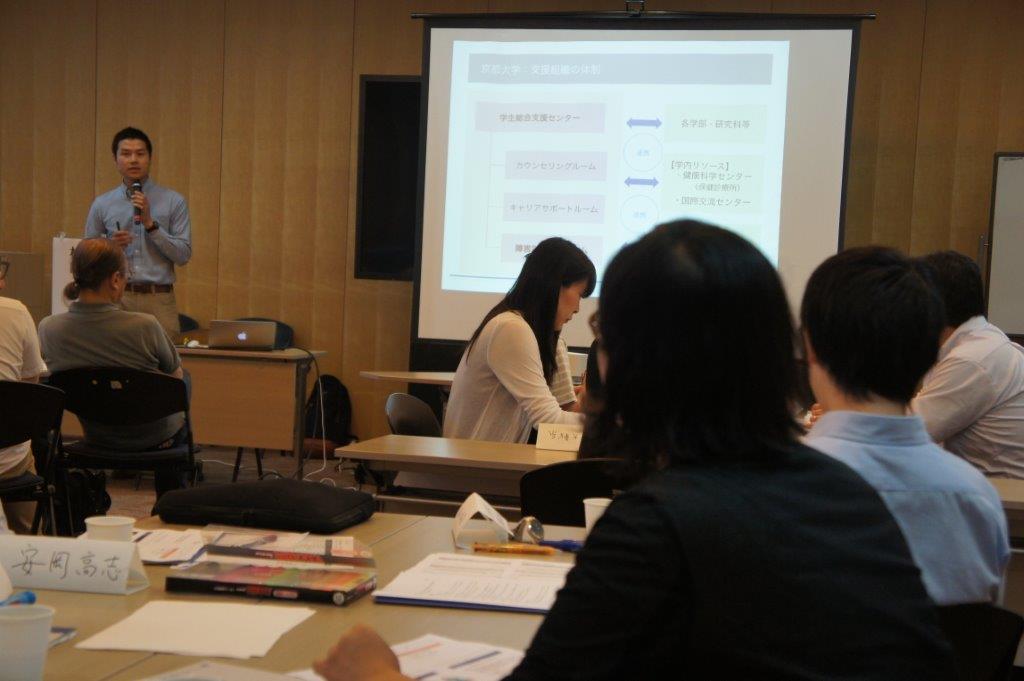
■ Training Day 2
The second day of the training began with a lecture by Mr. Takashi Yasuoka of Ritsumeikan University on “Basic Knowledge for Lesson Design.” Titled “Syllabus as a prop in the credit system and the syllabus for the image of human resource development”, he introduced not only his own classes, but also the curriculum map of the diploma policy from the perspective of the faculty. In the workshop, the syllabus was reviewed from the viewpoint of “achievement goals” and “grading method” and rewritten appropriately.
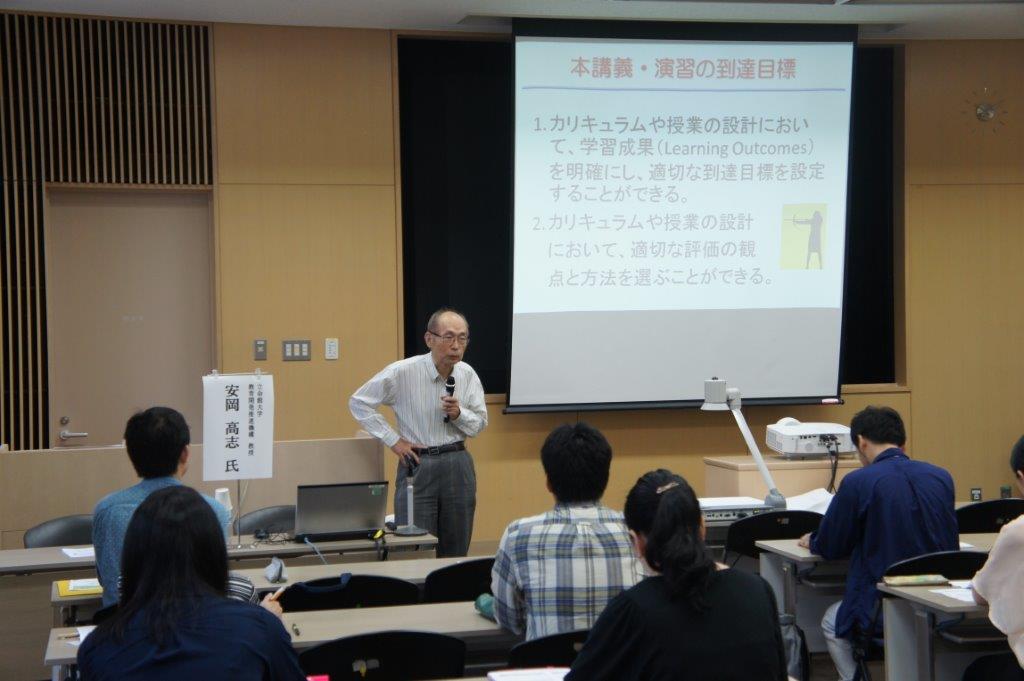
In the afternoon, a lecture by Mr. Norihiro Miho of Kyoto Gakuen University was held entitled “Basic Knowledge and Workshop for Learner-Centered Class Management.” He explained that learners are required to learn on their own, and that active learning is one of the methods to do so, and introduced techniques such as implementation methods, key points, clickers, flipped learning, and PBL-type classes. In the workshop, we designed lessons that incorporated active learning.
At the end of the training, following the joint training for new faculty FDs ≪Program B≫ held in March 2016, one participant who participated in this ≪Program A≫ and completed all courses was awarded a certificate of completion, and nine participants who participated in the two-day program were awarded a certificate of participation.
■New Teacher FD Joint Training Program ≪ Program B≫ Implementation Report
On Saturday, March 11 and Sunday, March 12, the University Consortium Kyoto held the “2016 Joint Training Program ≪Program B≫ for New Faculty Members.”
This year, we welcomed 13 participants from 6 universities.
■Training Day 1
The training began with an “icebreaker” moderated by Ms. Hiroko Hasegawa of Ikebo Junior College of the FD Planning and Research Committee. As a self-introduction, we did an icebreaker called “Name de Puzzle”. At first, the students seemed nervous, but the atmosphere became more relaxed, as they talked with smiles through the icebreaker.
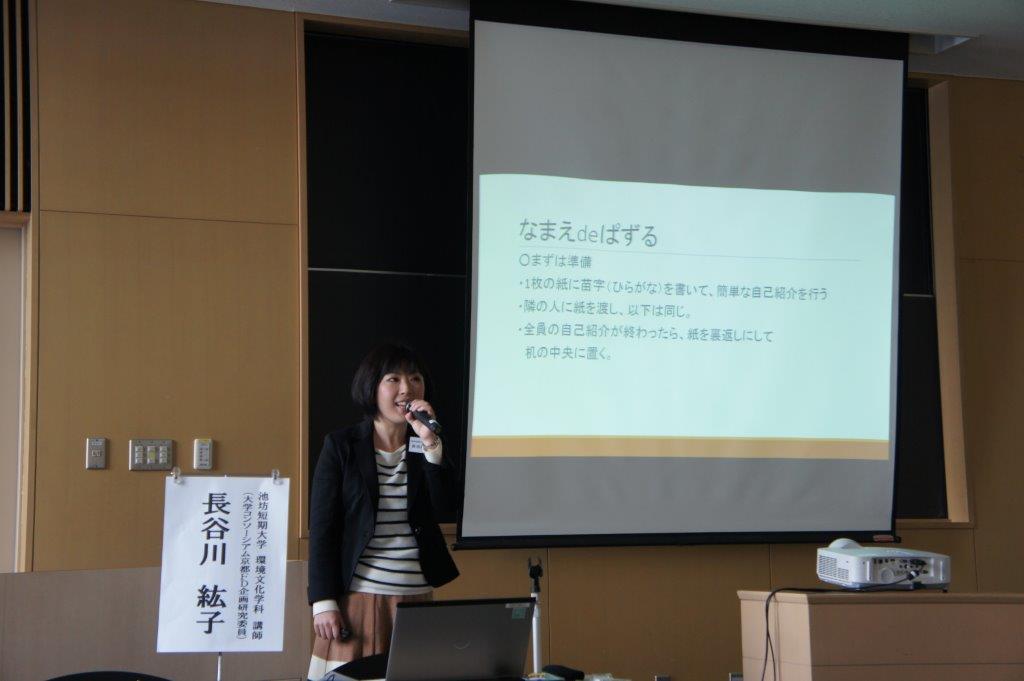
After the icebreaker, Mr. Hiroshi Kurita, Deputy Secretary General of the Foundation, gave a lecture on “Kyoto’s Universities and University Cities in Kyoto,” followed by a group discussion. Using worksheets, they introduced each other’s founding spirit, educational philosophy, and student temperament to deepen their understanding of their own university and university.
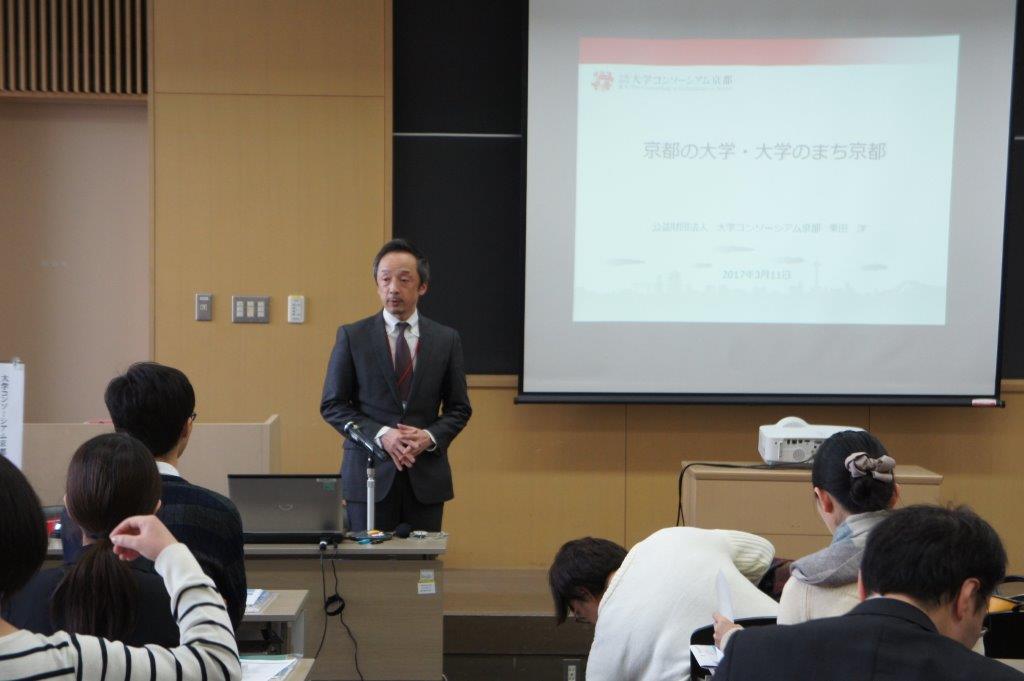
After a break, Mr./Ms. of Doshisha University gave a lecture on “Basic Knowledge for Lesson Design” by Mr. Katsuhiro Enzuki of Doshisha University. Under the theme of “What is a good grade evaluation?”, he explained grade evaluation and gave specific examples of evaluation methods such as sports and competitions about academic ability, and talked about grading and academic ability.
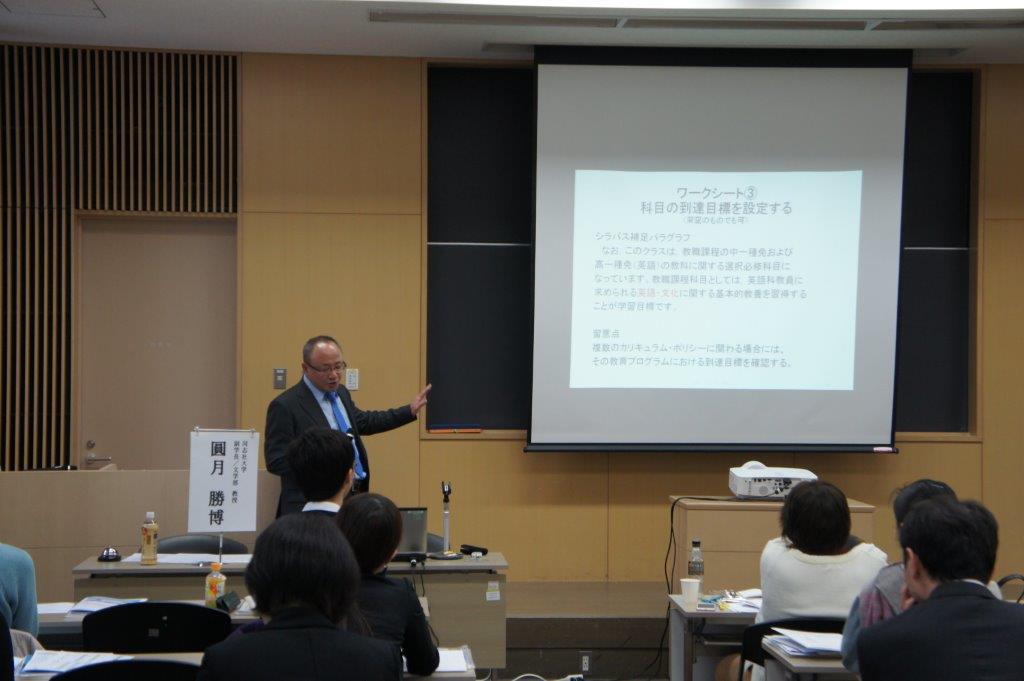
■ Training Day 2
The second day began with a review of the previous day, and was conducted by Kazuharu Abe of Kyoto Koka Women’s University, a lecturer of the “Workshop for Lesson Design”. They learned how to use the mandalat, actually experienced the mandalat using the sheets, and were divided into groups to work on “what is a good class for students”.
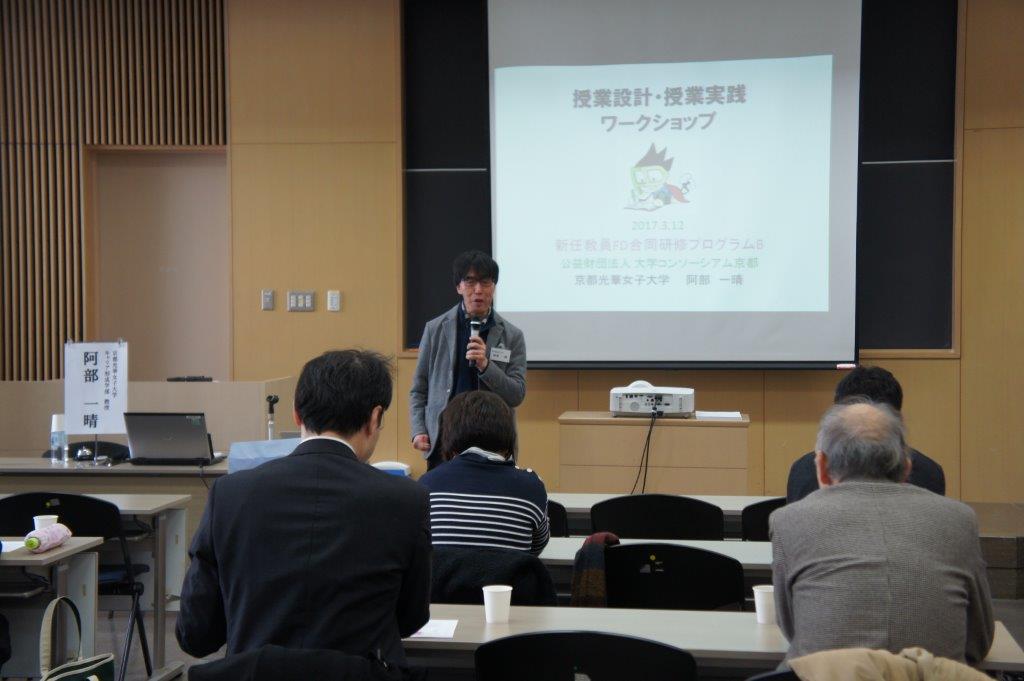
In the afternoon, each participant gave a 15-minute mock lesson as a “class practice.” The presenter gave a lesson based on the content he had designed, and the audience commented on the good points of the mock lesson. The reason for adopting this method is that there are not many opportunities for teachers to praise each other’s classes, so by praising rather than criticizing, students can realize the good points of their own classes. Furthermore, by exchanging advice, they seemed to be able to discover problems and how to solve them.
After that, the best class was selected, and the reasons for the selection and evaluation were reported.
At the end of the training, following the Joint Training Program for New Teachers FD ≪Program A≫ three participants who participated in this ≪Program B≫ were presented with certificates of completion, and certificates of participation were presented to five participants who participated in the two-day program.
Inquiries
University Consortium Kyoto FD Project
TEL 075-353-9163 FAX 075-353-9101
〒600-8216 Shimogyo-ku, Kyoto-shi, Nishitoin-dori, Shiokoji, Shimo-ku, Kyoto, Campus Plaza Kyoto
* Reception hours: Tuesday ~ Saturday 9:00 ~ 17:00 (excluding year-end and New Year holidays)














